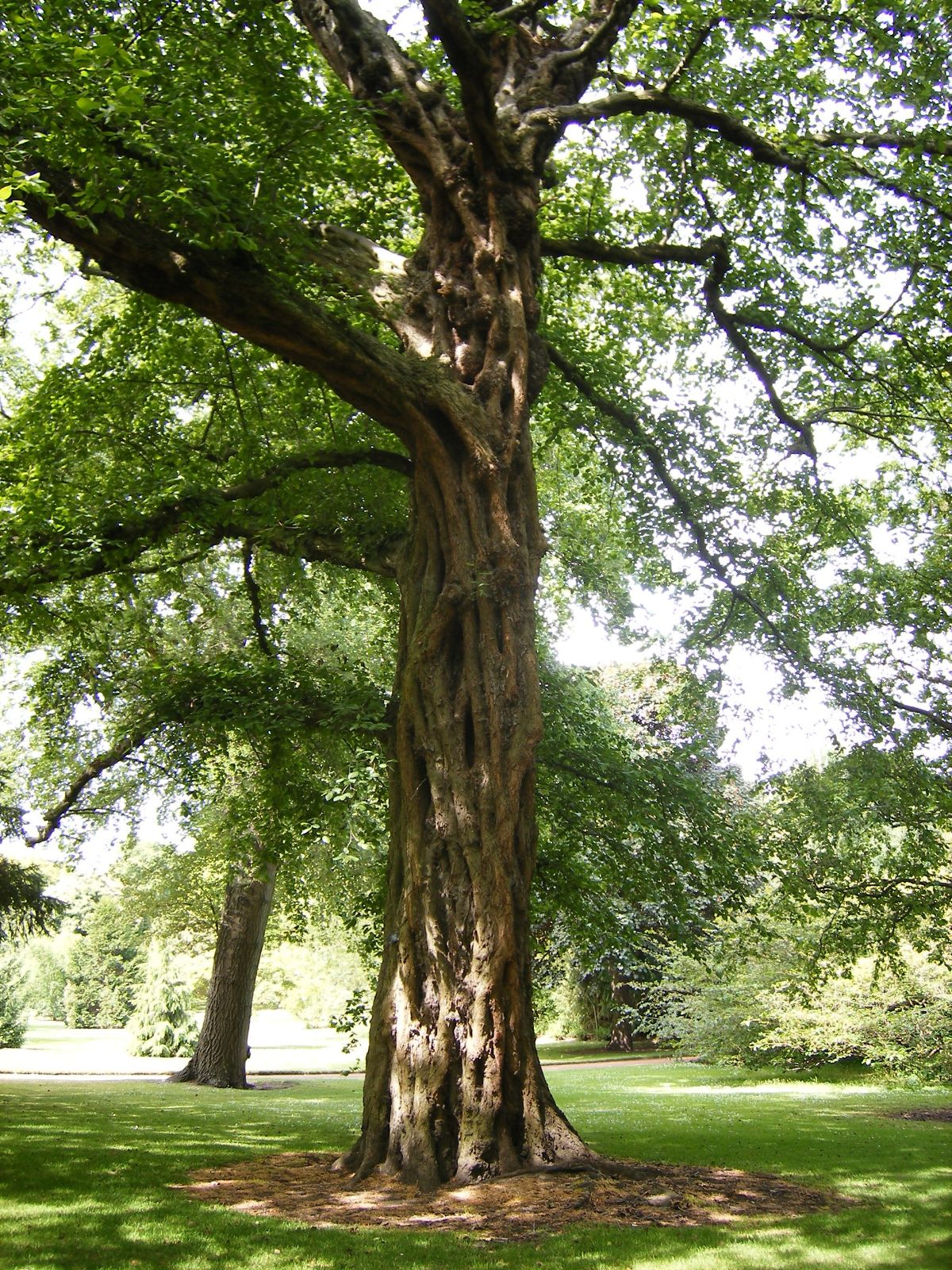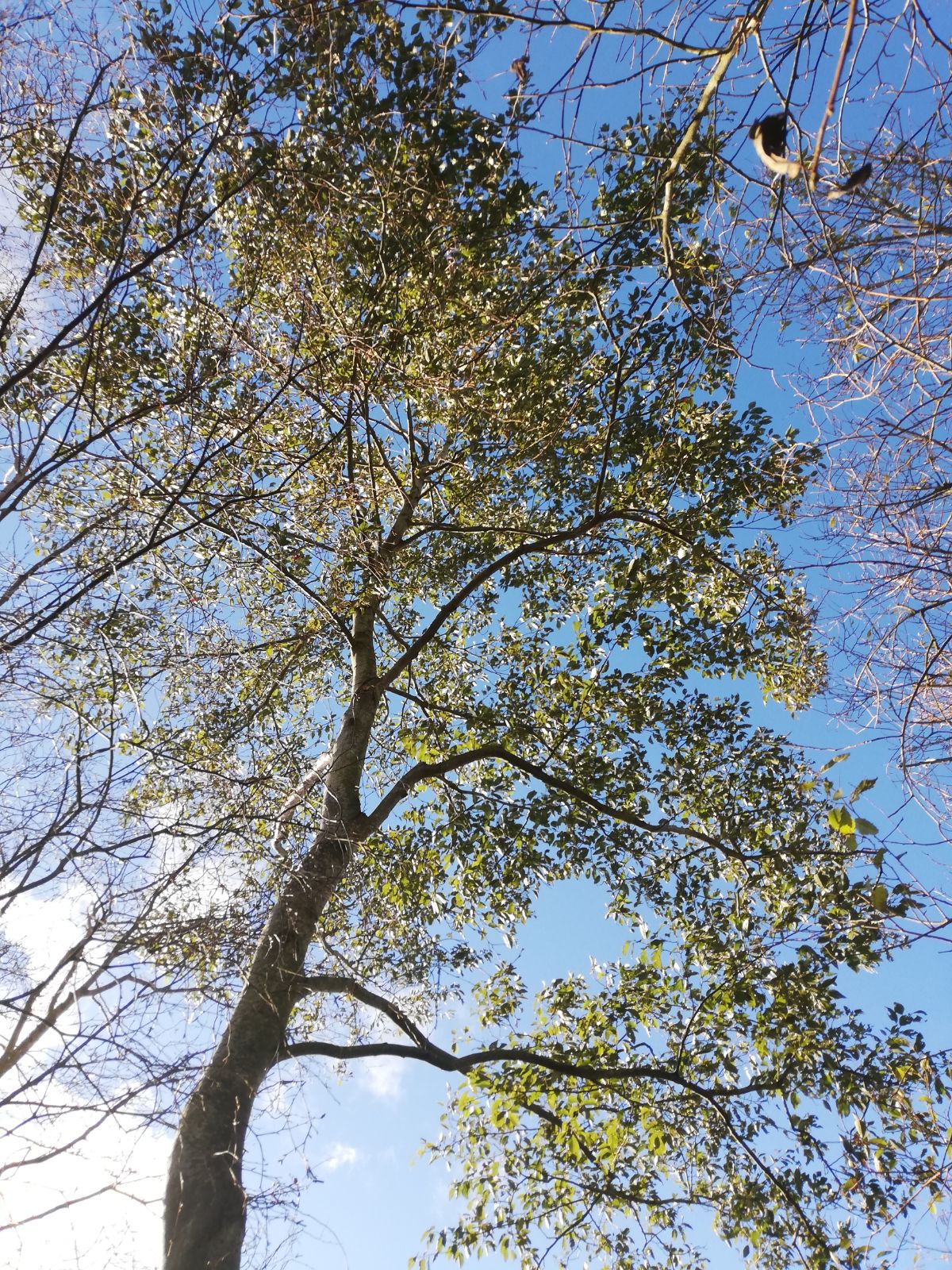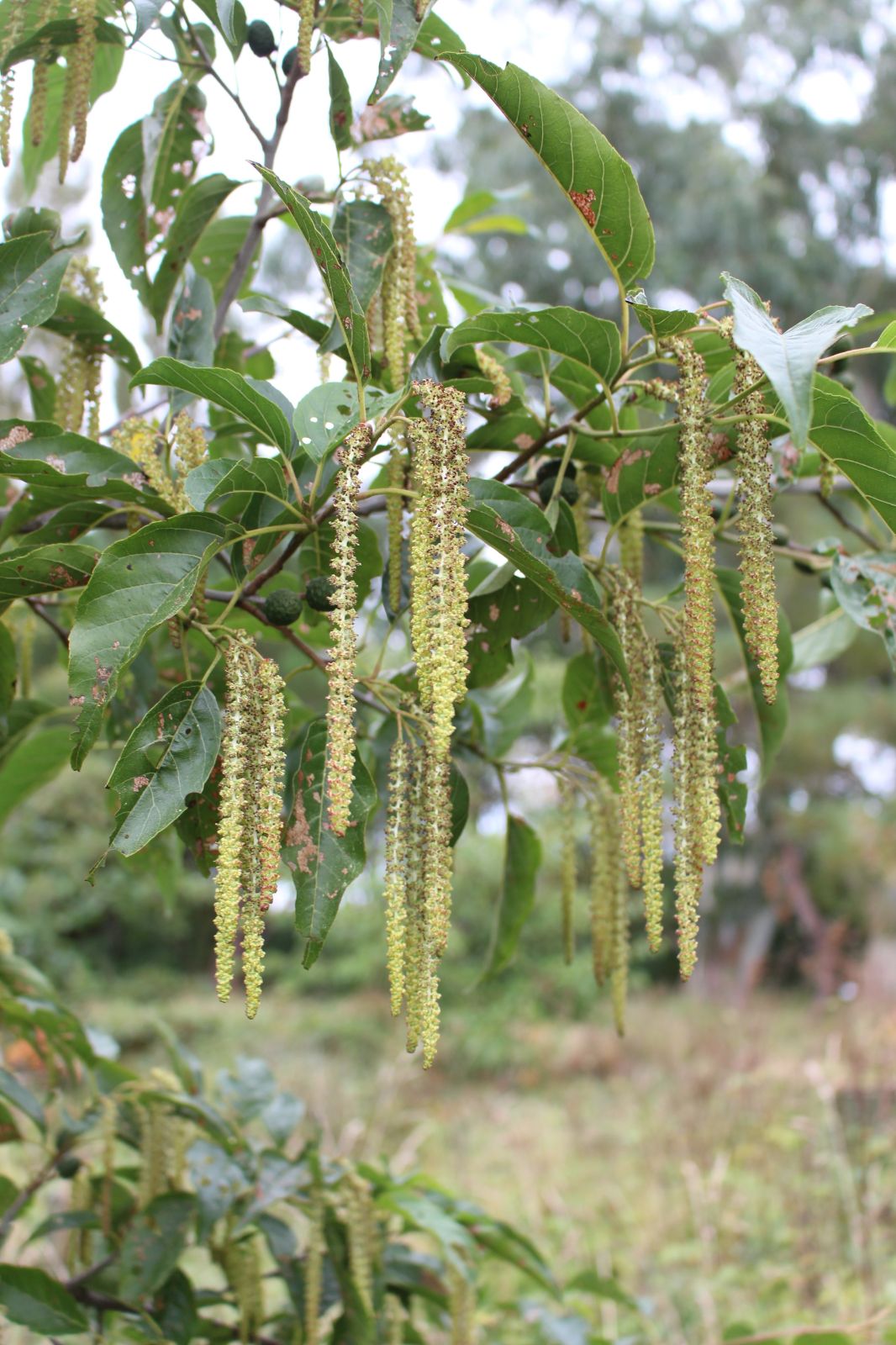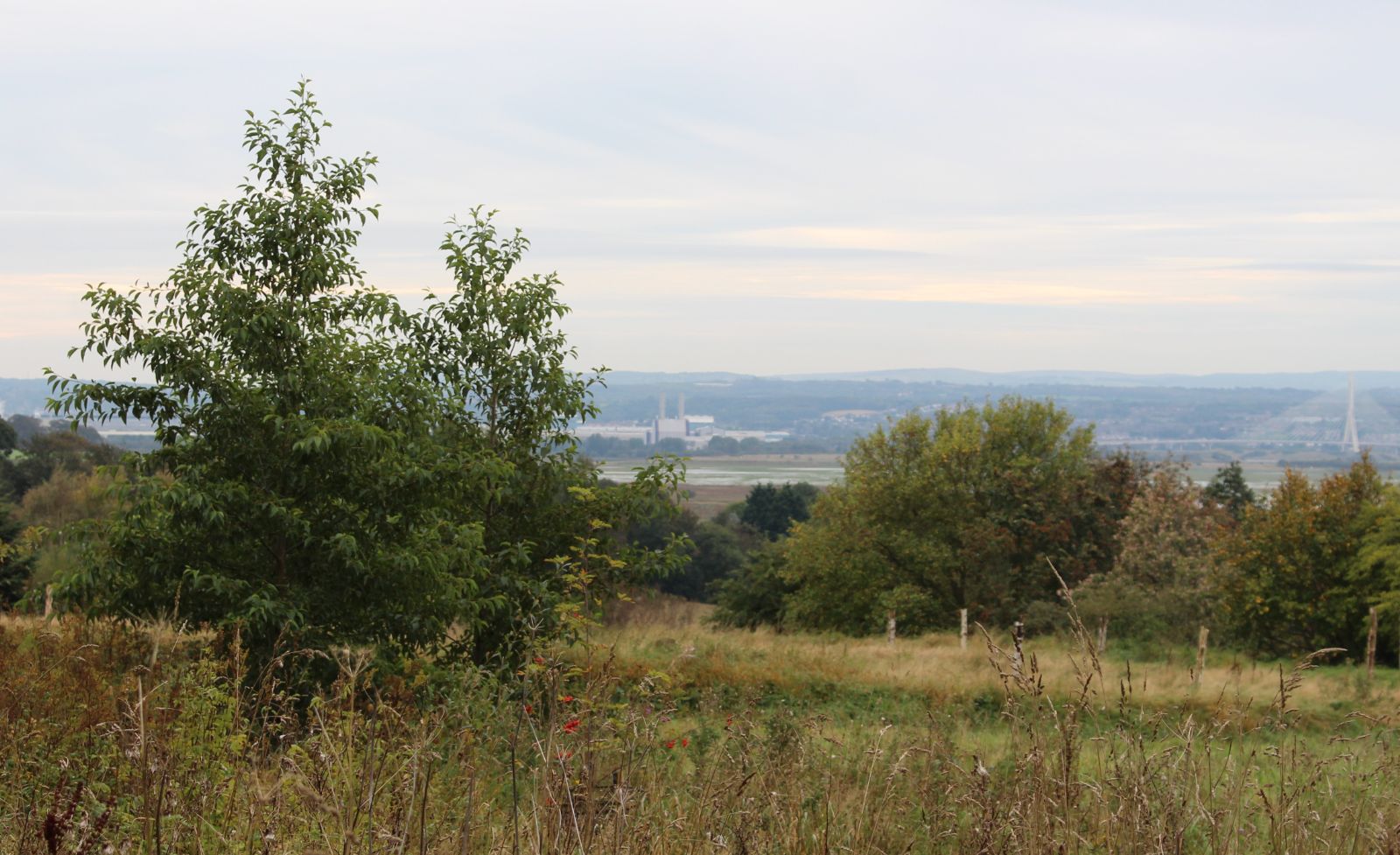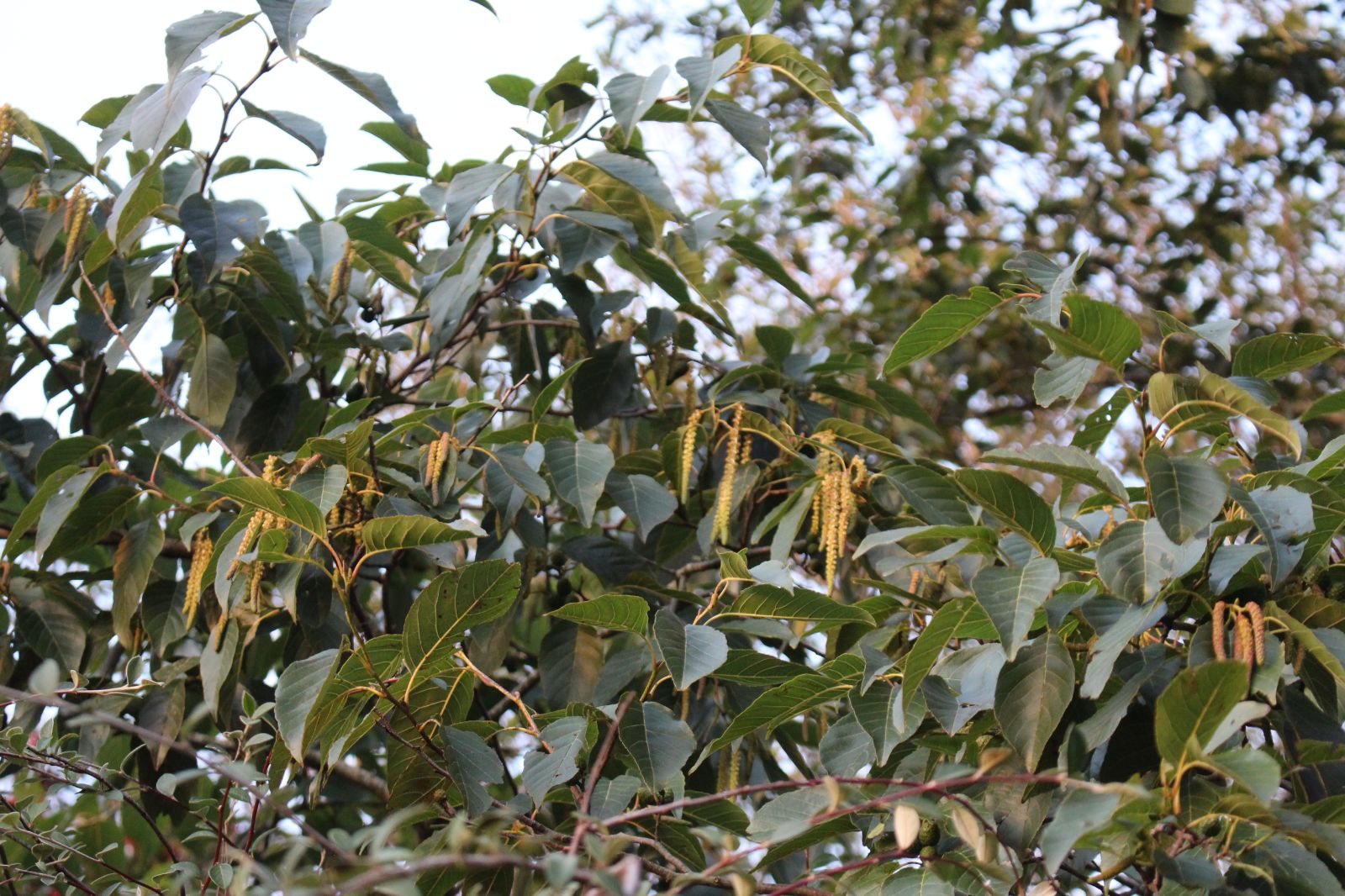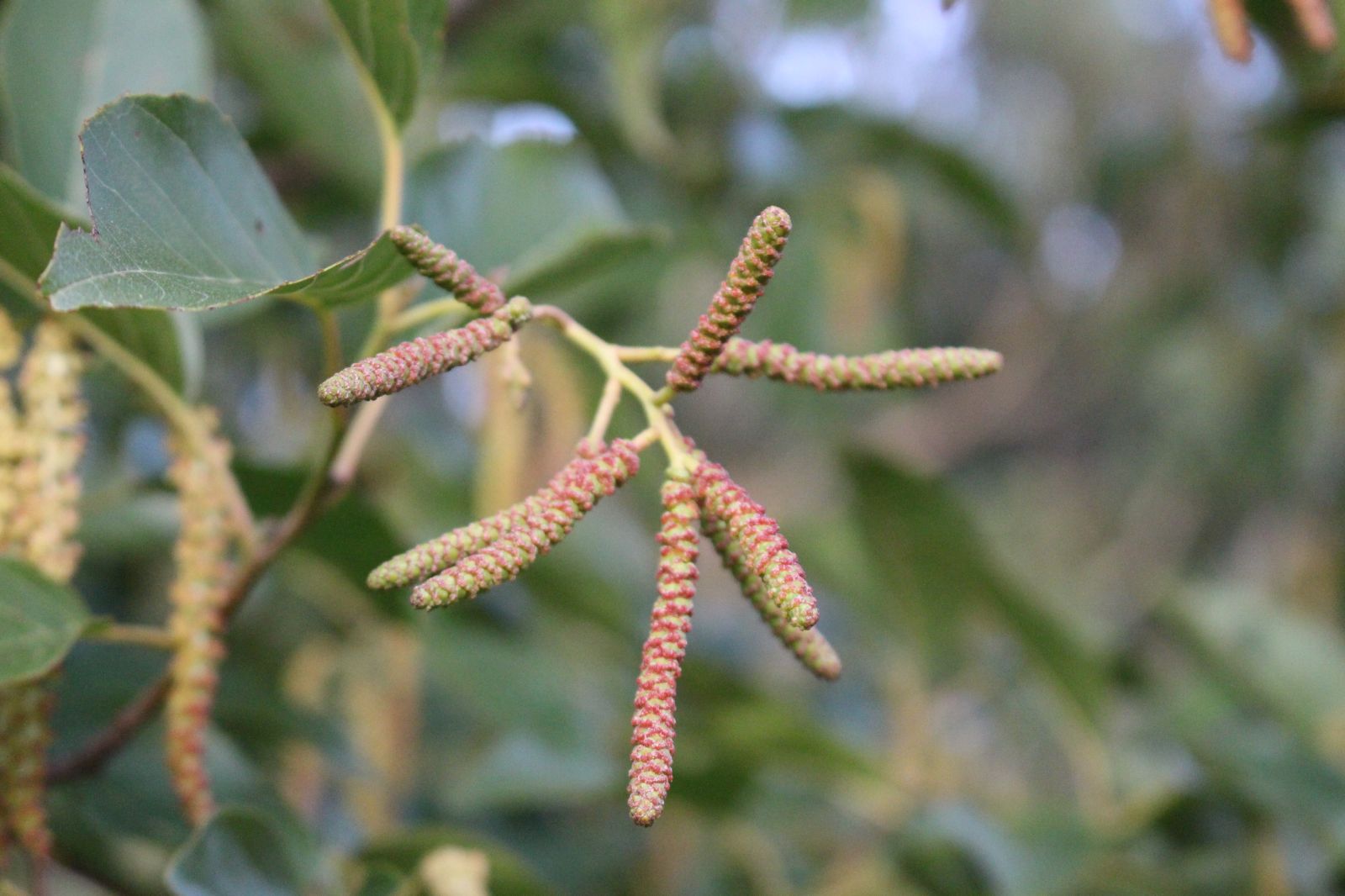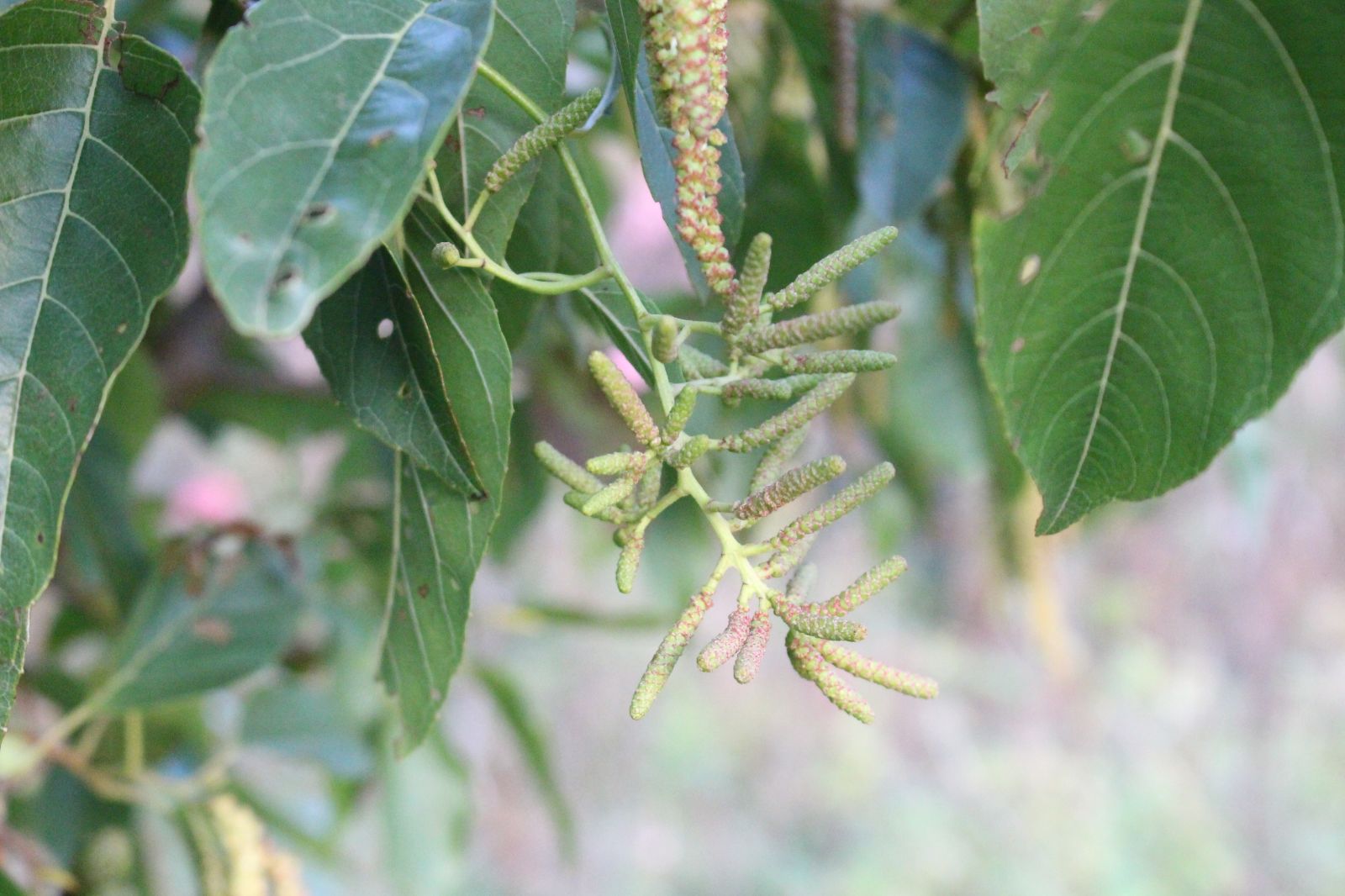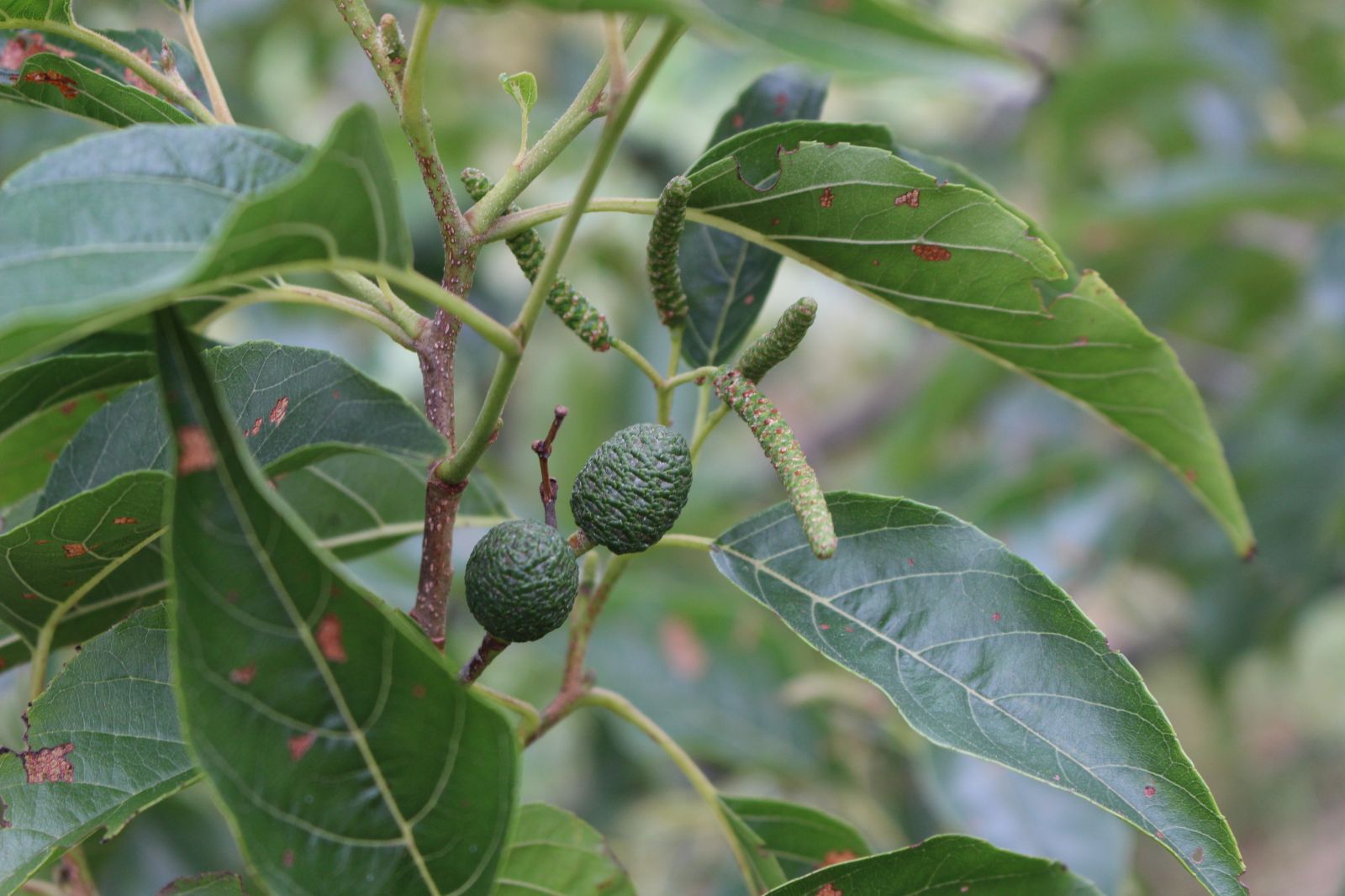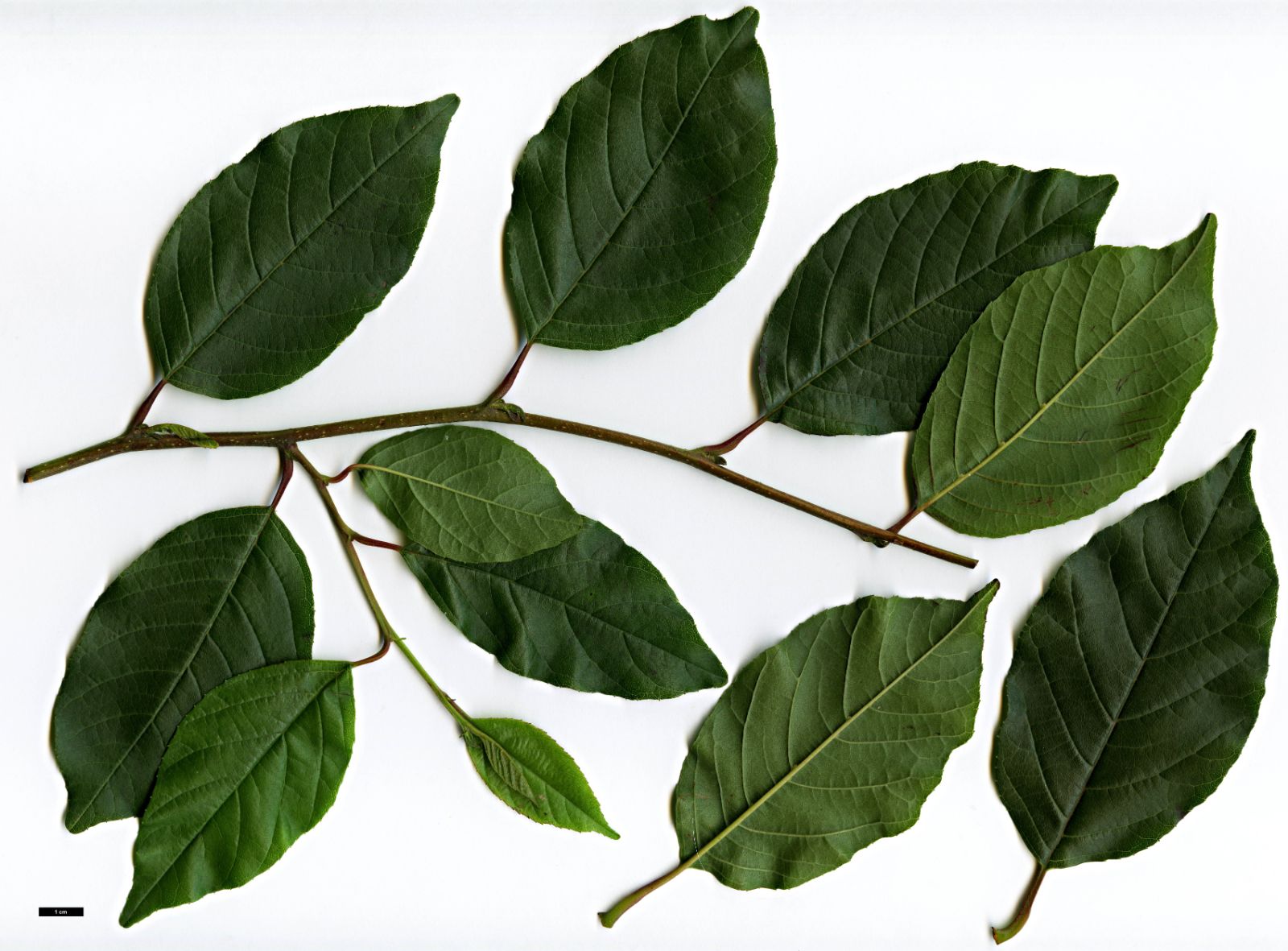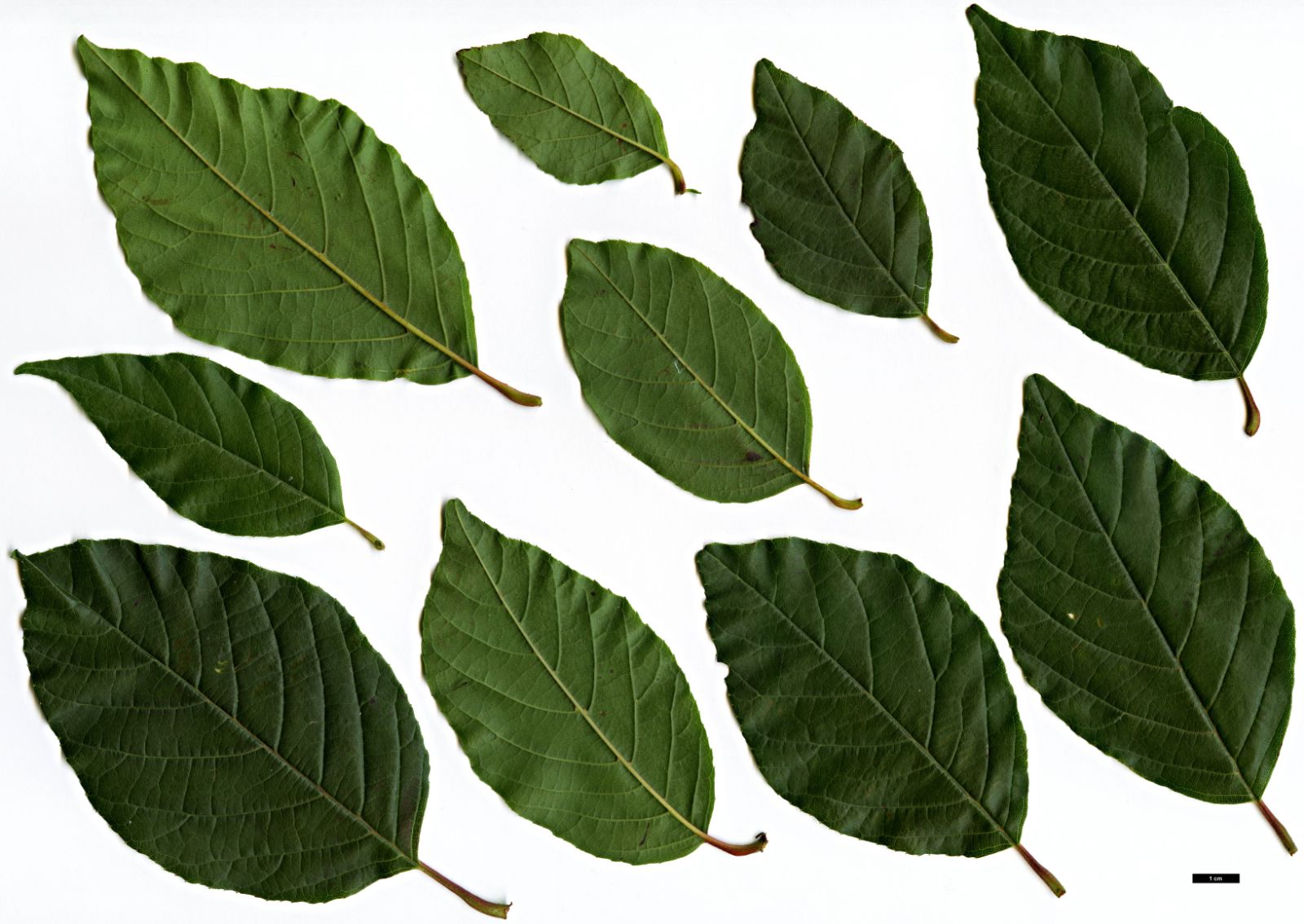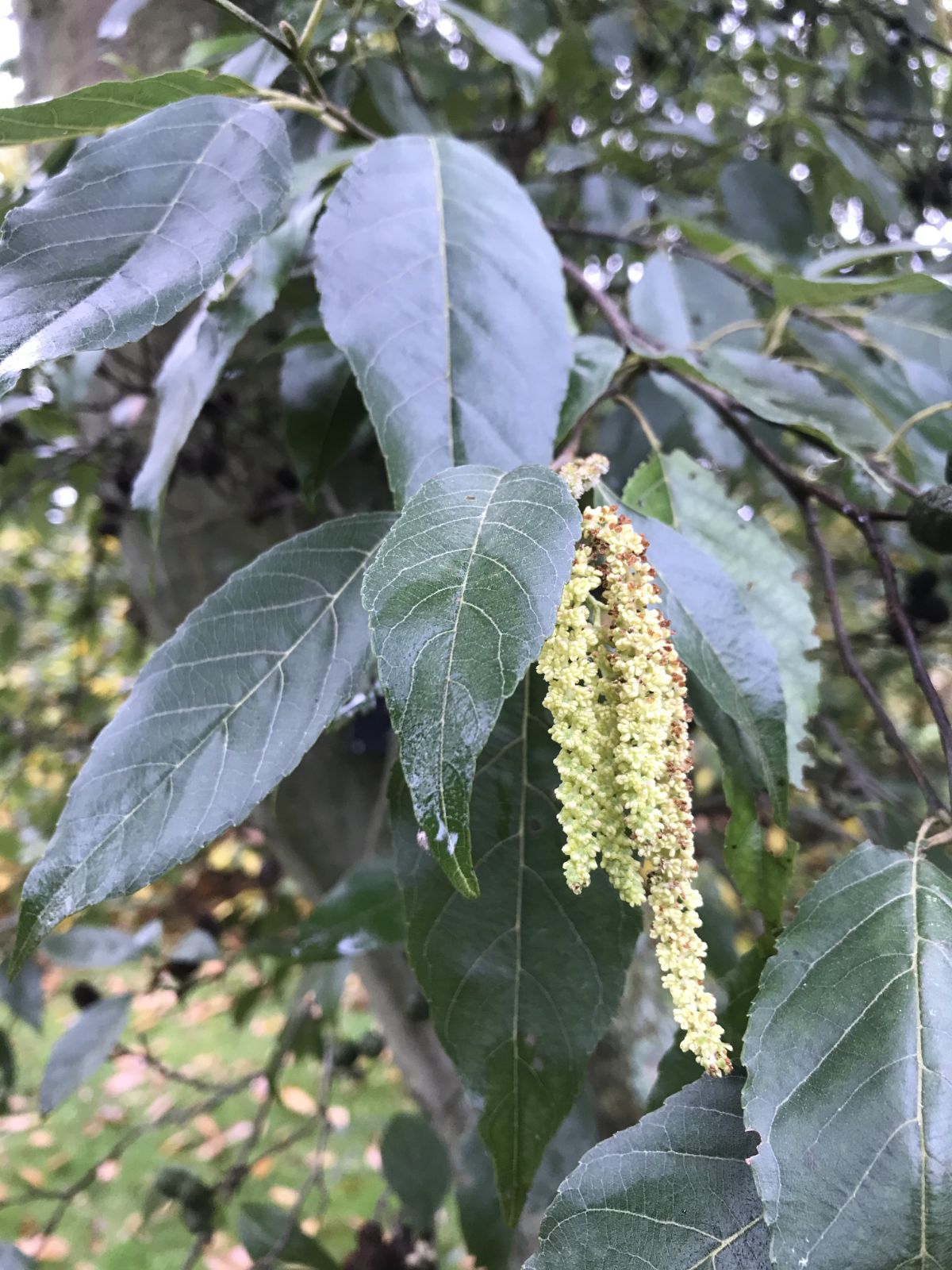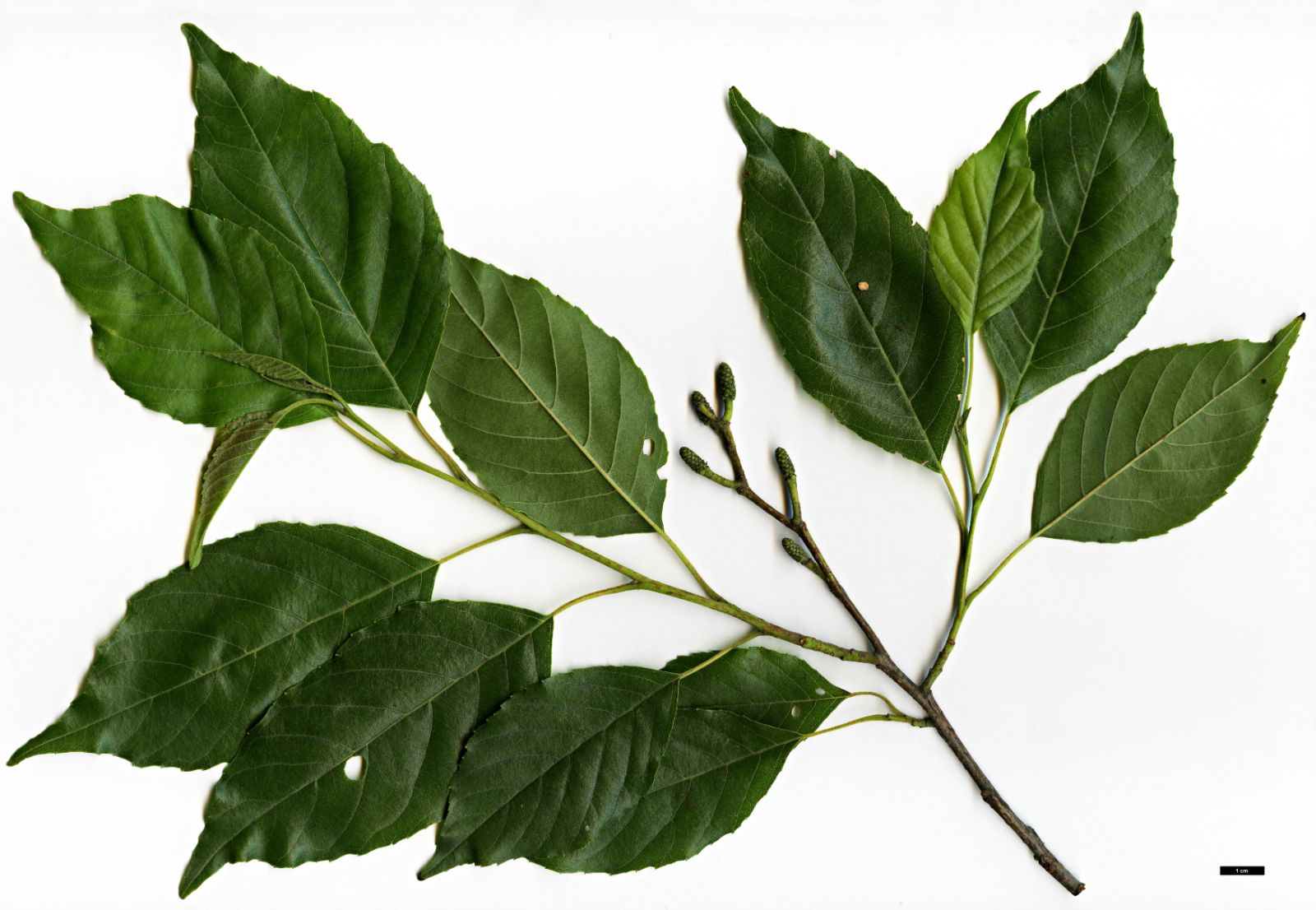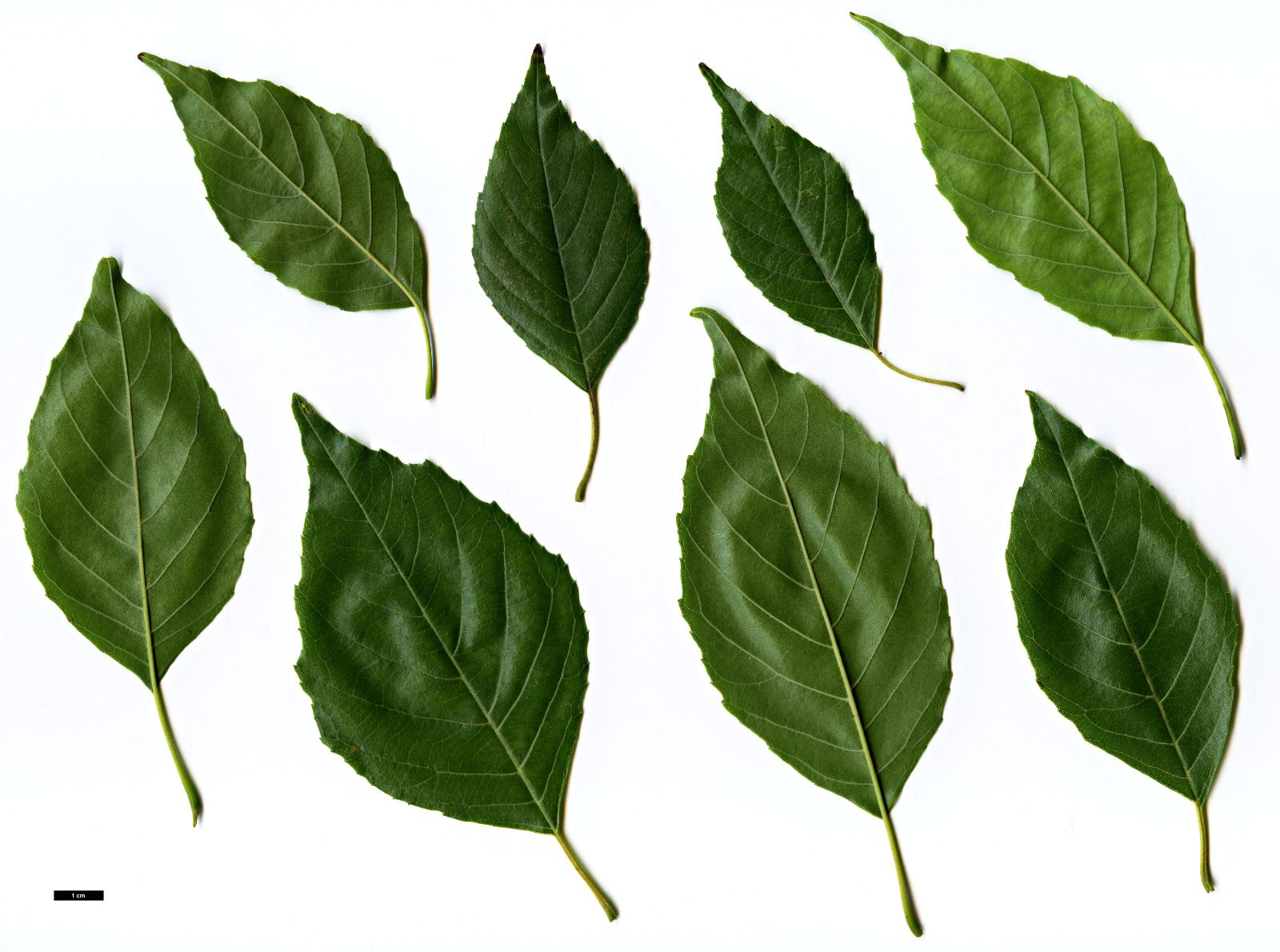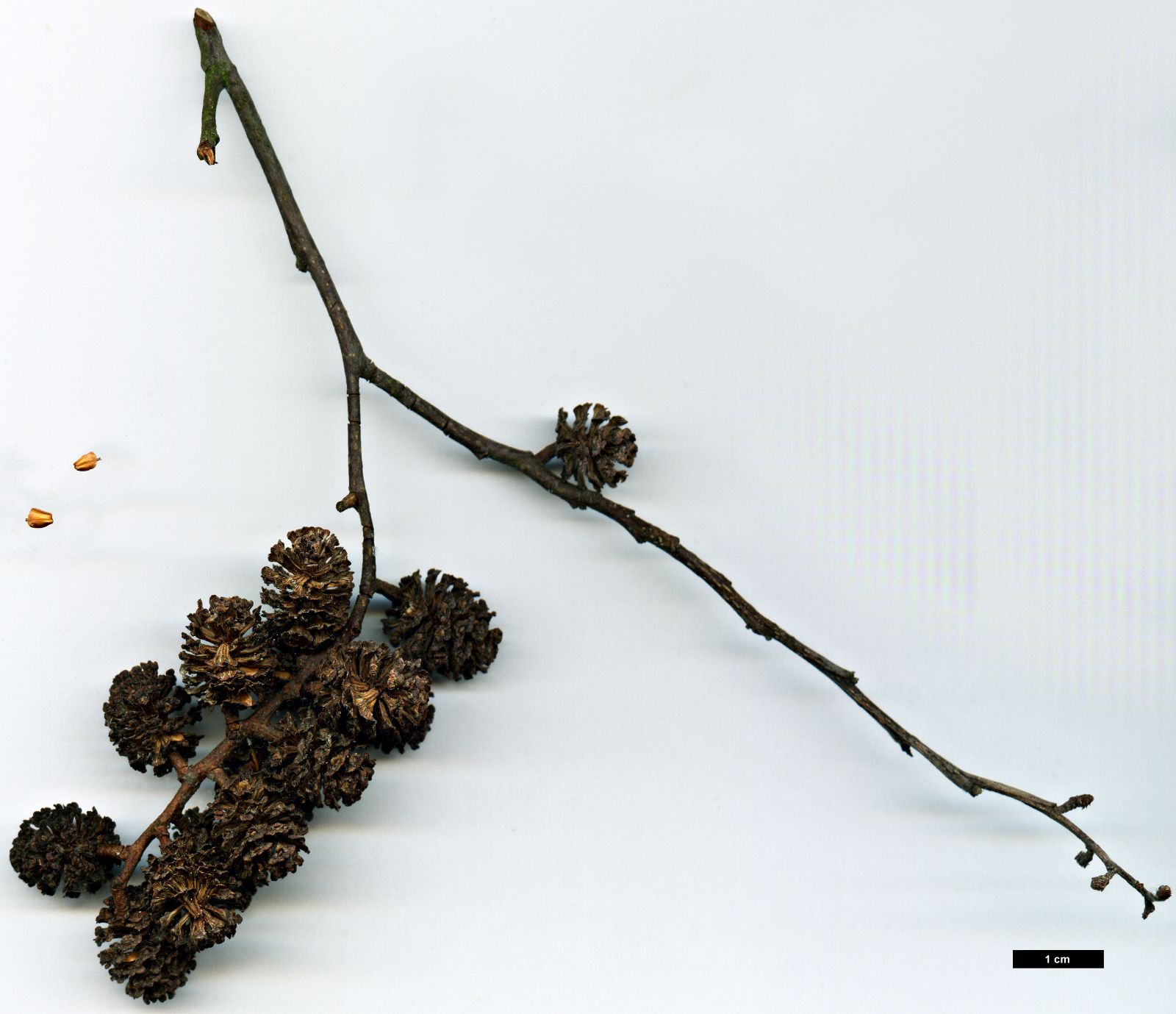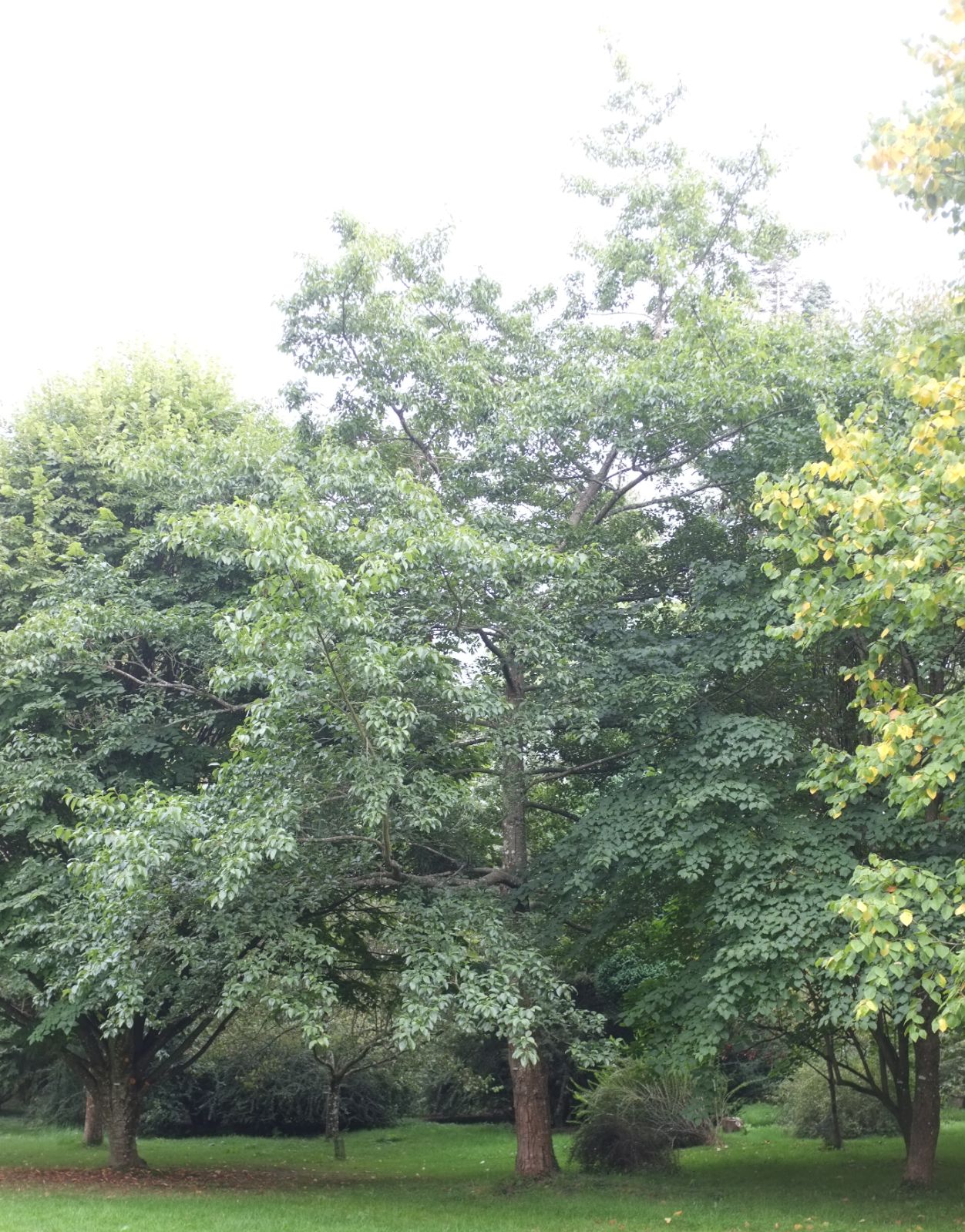Alnus formosana
Sponsor
Kindly sponsored by
a member of the International Dendrology Society
Credits
Tim Baxter & Hugh A. McAllister (2024)
Recommended citation
Baxter, T. & McAllister, H.A. (2024), 'Alnus formosana' from the website Trees and Shrubs Online (treesandshrubsonline.
Genus
- Alnus
- Subgen. Clethropsis
Common Names
- Taiwan Alder
Synonyms
- Alnus maritima var. formosana Burkill
- Alnus japonica Callier (not Sieb. & Zucc.)
- Alnus henryi C.K. Schneid.
Other taxa in genus
- Alnus acuminata
- Alnus alnobetula
- Alnus betulifolia
- Alnus cordata
- Alnus cremastogyne
- Alnus djavanshirii
- Alnus dolichocarpa
- Alnus × elliptica
- Alnus × fallacina
- Alnus fauriei
- Alnus ferdinandi-coburgii
- Alnus firma
- Alnus glutinosa
- Alnus hirsuta
- Alnus incana
- Alnus inokumae
- Alnus japonica
- Alnus jorullensis
- Alnus lanata
- Alnus lusitanica
- Alnus maritima
- Alnus matsumurae
- Alnus × mayrii
- Alnus nepalensis
- Alnus nitida
- Alnus oblongifolia
- Alnus orientalis
- Alnus pendula
- Alnus rhombifolia
- Alnus rohlenae
- Alnus rubra
- Alnus serrulata
- Alnus serrulatoides
- Alnus sieboldiana
- Alnus 'Sipkes'
- Alnus × spaethii
- Alnus subcordata
- Alnus trabeculosa
Tree to 20 m with broad spreading branches. Bark grey-brown, shiny with prominent lenticels. Branchlets purplish-brown, terete but becoming green and trigonous at tips. Buds with 1–2 mm stipe, 2 glabrous ribbed scales, terminal buds formed from folded leaves with lateral bud beneath. Petiole 10–25 mm, glabrous except densely pubescent in furrow. Leaves elliptic, ovate or oblong-lanceolate, 5–13 × 3–6 cm, apex acute to acuminate, base truncate to broadly cuneate, deciduous to semi-evergreen, mid- to deep-green, glossy, subglabrous with scurfy hairs along veins and dense tufts in vein axils abaxially. Edges rather wavy with small forward-pointing teeth. Semicraspedodromous with 6–8(–9) forward-pointing lateral veins on each side of midvein. Staminate inflorescences catkin-like, 3–8 cm long (to 12 cm at anthesis), mostly in groups of 4–6, terminal to stem, semi erect, becoming pendulous at anthesis. Pistillate catkins small, green, usually solitary to 2–4, ellipsoid, 1–2.5 cm, peduncle densely scaly, 3–5 mm. Fruit green, maturing to dark-brown or black, resinous, softly woody when young, 9–18 × 8–12 mm, ovoid; bracts with 5 equal-sized lobes, thickened, 3–4 mm. Flowering Autumn (September to November), fruiting the following year (July-September). (Li & Skvortsov 1999; T. Baxter, pers. obs.).
Distribution Taiwan
Habitat Common on wet ground and along riverbanks in forests, forming pure or mixed stands. Near sea level to 2900 m asl.
USDA Hardiness Zone 8a-11
RHS Hardiness Rating H5
Conservation status Least concern (LC)
Alnus formosana has historically been the subject of much confusion in terms of its description and identification. It has variously been associated with A. japonica and A. maritima, and there has been much confuision over the identity of A. henryi which we treat here as a synonym (see below for discussion). Makino (1912) based his type description on the autumn-flowering taxon now recognised as A. formosana; it is thought A. henryi was erroneously named by Camillo Schneider as a spring-flowering version (Sargent 1916). Sargent described A. formosana as ‘flowering in the autumn like A. maritima Muhlenberg which is otherwise easily distinguished by the different leaves, by the smaller narrower petals of the male flowers and by other characters. A. formosana is a subtropical species like A. nitida Endlicher’ (Sargent 1916). This species appears to be more closely related to the west Himalayan A. nitida Endl. and the eastern North American A. maritima Nutt. than to other Asian alders (Chen & Li 2004).
Morphologically Alnus formosana is very similar to A. japonica but can readily be distinguished by being autumn-flowering, having a typically more spreading and graceful habit, smaller fruit, and leaves that are more slender with acute to acuminate apices. All autumn-flowering taxa ripen their fruit in the following year, often taking a full year to ripen. The terminal buds of several species of alder, including A. formosana, are made up of exposed folded leaves with secondary lateral buds beneath, with no bracts. A. japonica, by contrast, has larger fruit, broader leaves with bluntly acute apices, buds enclosed by green-brown to black bud scales over winter, and is spring-flowering. Both are distinguished from A. nepalensis and A. nitida with much smaller leaves and male inflorescences with 2–5 catkins in a raceme.
The staminate inflorescences of Section Clethropsis, including Alnus formosana, are of two types. Most are as described above, with 4–6 catkins in terminal pendulous racemes, but some plants also show a ‘primitive’ flowering type with numerous staminate catkins in panicles. This is not commonly seen in cultivation and only some individual plants demonstrate this floral type (e.g. one of seven plants at Ness in the UK). Pistillate catkins and fruit may occasionally be more numerous.
Alnus formosana is of great ornamental merit as a landscape tree and is apparently hardy throughout the UK and Ireland. Some reports of a lack of hardiness may be due to provenance, but careful selection would expect to find hardier and more drought tolerant forms; its ecological plasticity has been widely studied in Taiwan (Chian-Yi, Kang & Shong 2000). Taiwan Alder grows into an attractive semi-evergreen tree with an upright, graceful habit, spreading branches and dark green foliage. In mild winters it will remain evergreen in sheltered positions. It is conspicuous in flower, with massed displays of attractive pendulous male catkins reminiscent of Garrya elliptica. It is not as commonly grown as it deserves, but is gradually gaining favour. Plants at Kew, Edinburgh and Howick in the UK, collected under ETOT 40 as A. henryi, are clearly A. formosana as they flower prolifically in autumn (H. Baldwin pers. comm. 2019). Large specimens in UK cultivation are found at RBG Edinburgh (16 m in 2014), Tregrehan, and Ness (The Tree Register 2021). A limiting factor appears to be high susceptibility to Alder Leaf Beetle – plants at Ness were completely defoliated, but did regrow successfully.
Alnus formosana is apparently a very rare tree in North America: neither Jacobson (1996) nor Hatch (2021–2022) refer to it, and it does not appear in the online catalogues of major specialist collections.
The mysterious Alnus henryi
The original account of this species was written by Camillo Karl Schneider in Plantae Wilsoniae (Sargent 1916). This was based on a single specimen collected by Augustine Henry as Alnus maritima var. formosana under his number H 1389, originating from Tamsui, an area to the north east of Taipei, collected on 26th September 1899 (L. Pearson pers. comm. 2022). Schneider states ‘This species looks very different from A. formosana Makino or A. maritima Muhlenberg or A.japonica Siebold & Zuccarini. The leaves of the only specimen I have seen are rather short and broad, and the fruiting catkins are much more numerous than in the above species. The fruit and bracts are different too. It flowers apparently in the spring like A. japonica Siebold & Zuccarini, and not at the end of the summer or in the fall like the two other species’ (Sargent 1916).
There are a number of inconsistencies in Schneider’s, account that should reduce Alnus henryi to a synonym of A. formosana, which is the position we adopt here. The sole specimen on which the name is based (NYBG 2020) is a single herbarium sheet of a non-flowering specimen with little extension growth and one small, female infructescence. The autumn-flowering species often retain their fruit for a full year and these mature and shed their seeds prior to flowering, often a few short weeks after. If examined in this state, it could appear to be a spring-flowering speices whose fruit are maturing for shedding still later in the season. The single specimen from which Schneider described A. henryi (Sargent 1916) was collected in September and appears in this pre-flowering state. A. formosana may exhibit both paniculate and racemose inflorescences, and the type specimen clearly has racemose clusters of fruit. The leaves are stated to be ‘short and broad’, but this would also be true of any suppressed or shade shoot of A. formosana and indeed is typical for many branches collected from large forest trees with typical shoots well out of reach in full sun. With the ubiquitous A. formosana found throughout Taiwan, it would be unlikely to find a very similar species sharing a similar ecological niche, especially considering how morphologically and genetically variable the former species is (Chian-Yi, Kang & Shong 2000). All specimens identified as A. henryi (e.g. GBIF) are clearly referable to A. formosana (T. Baxter, pers. obs.), but with fieldwork and genomics, it would be useful to confirm if a spring flowering species does occur on Taiwan.
Alnus henryi’s current IUCN status – Critically Endangered (Shaw et al. 2014) – is unlikely to reflect reality due to taxonomic uncertainty. Other accounts of this species including the Flora of China (Flora of China 2020) state numerous inconsistencies with Plantae Wilsoniae, including flowering times.
Plants at Kew, Edinburgh and Howick collected under ETOT 40 as Alnus henryi are clearly A. formosana as they flower prolifically in autumn (H. Baldwin pers. comm. 2019). There are several other trees in cultivation as ‘A. henryi’ including at Wakehurst Place and the UK height champion (18 m × 120 cm dbh, in 2018) at Sandling Park, Kent, described by Owen Johnson as a ‘tree of great grace’ (Johnson 2007), and the UK girth champion, from BSWJ 1731 at Hergest Croft, Herefordshire, 17.5 × 164 in 2023 (The Tree Register 2023).

